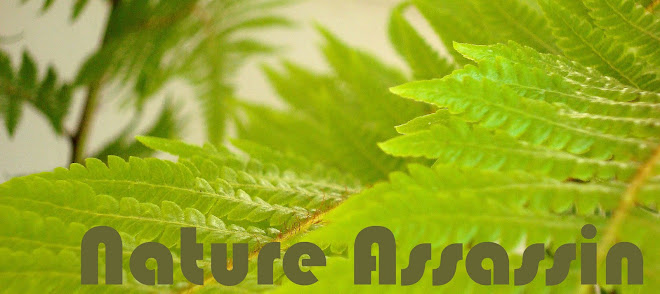This weekend I acquired my first Schefflera. In it's previous life as a bonsai, it was performing poorly and headed for disposal when my friend Julia came upon it. It was graciously donated to me.
As you can see, this bonsai habit is what we technically call "jacked up." And it's no wonder... the roots are cemented into the pot by a top-layer of gravel and glue, as big box stores often do with bonsai for some inexplicable reason. Nonetheless, it is perfect for one thing: pyrotechnics.
What? Pyrotechnics? No, just kidding. What I really meant was Air Layering.
Air layering is a propagation method. Air-layering requires some labor and patience, but it's a great way to revive a plant that has become tall, top-heavy, or bare along the trunk. It works with specifically non-herbaceous or woody plants. The process allows new subterranean roots to grow in the air along the stem. This is achieved by partially severing the main stem/trunk and then tricking it into thinking it's underground. When the new roots have grown sufficiently, you can sever the trunk, and ta-da! New plant, ready for potting. Here's how.
Assemble your Air-Layering tools:
A small, sharp, sterilized knife*
A clean paintbrush*
Rooting hormone powder
Long-fiber sphagnum moss (one handful)
Plastic wrap
Tape or twist-ties
*Always use clean tools. This is modern amateur plant surgery, not Civil War whack-a-limb. Have you been feeding whiskey to your schefflera-patient as well? For shame.

Okay. Step one. Using your knife, take an angular incision along the stem of the plant at the desired height. Make sure there is a leaf node (or adventitious root protrusion, if applicable) above the cut. Remove any intermediate leaves, leaving a bundle of the topmost growth. Angle the cut upward so that you have separated (but not removed) a small flap of stem tissue. What you are cutting is called a "tongue," so that may give you an idea of what it should look like. Also, the cut should be shallow- less than halfway through the stem, or the upper portion will die.
Step two. Brush the cut with rooting hormone powder.
Step three. Get your sphagnum, and moisten it with clean water. Squeeze out the excess. Wrap the wad of sphagnum around the cut as if you were dressing a wound with a bandage.
Step four. Take your plastic, and wrap it around the sphagnum bandage. Secure it in place with your tape. All done! Give your plant a little pat-pat, and resume regular watering in a few days.

Holy crap! That was so easy and enjoyable. Now just keep the dressing evenly moist, and you should expect to see roots forming after a few months. Water from the top of the dressing, with a dropper or something similar, rather than opening the dressing and inviting bacteria. Wait until you see roots through the plastic before you remove it. Then you can sever the stem just below the roots (don't leave too much extra; it will rot) and plant in the smallest suitable container.
Good luck!



The gravel-and-glue thing isn't inexplicable. It's totally explicable.
ReplyDeleteHmm. Marketing trick?
ReplyDeleteKeeps the gravel in place during transport From big box nursery
ReplyDelete